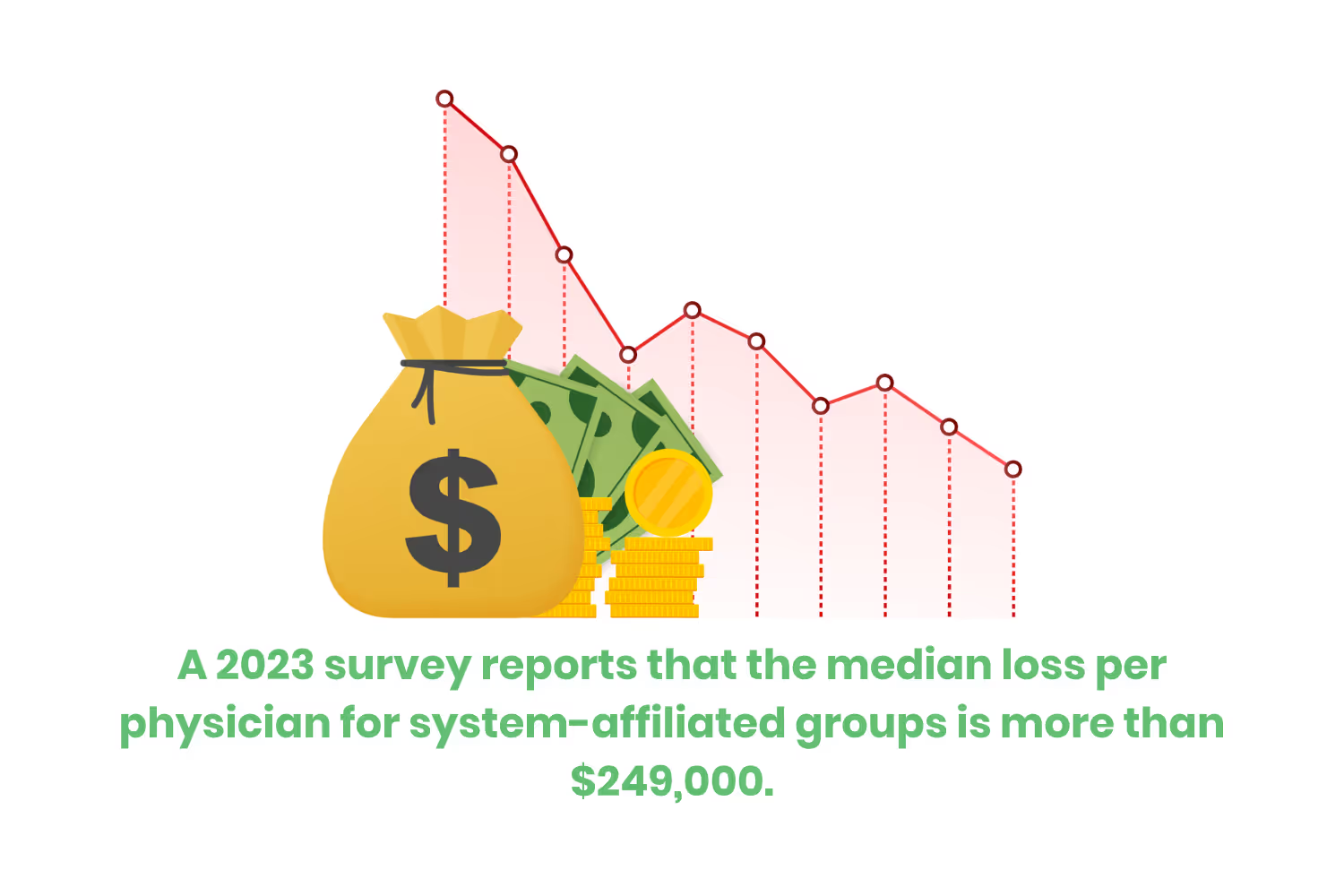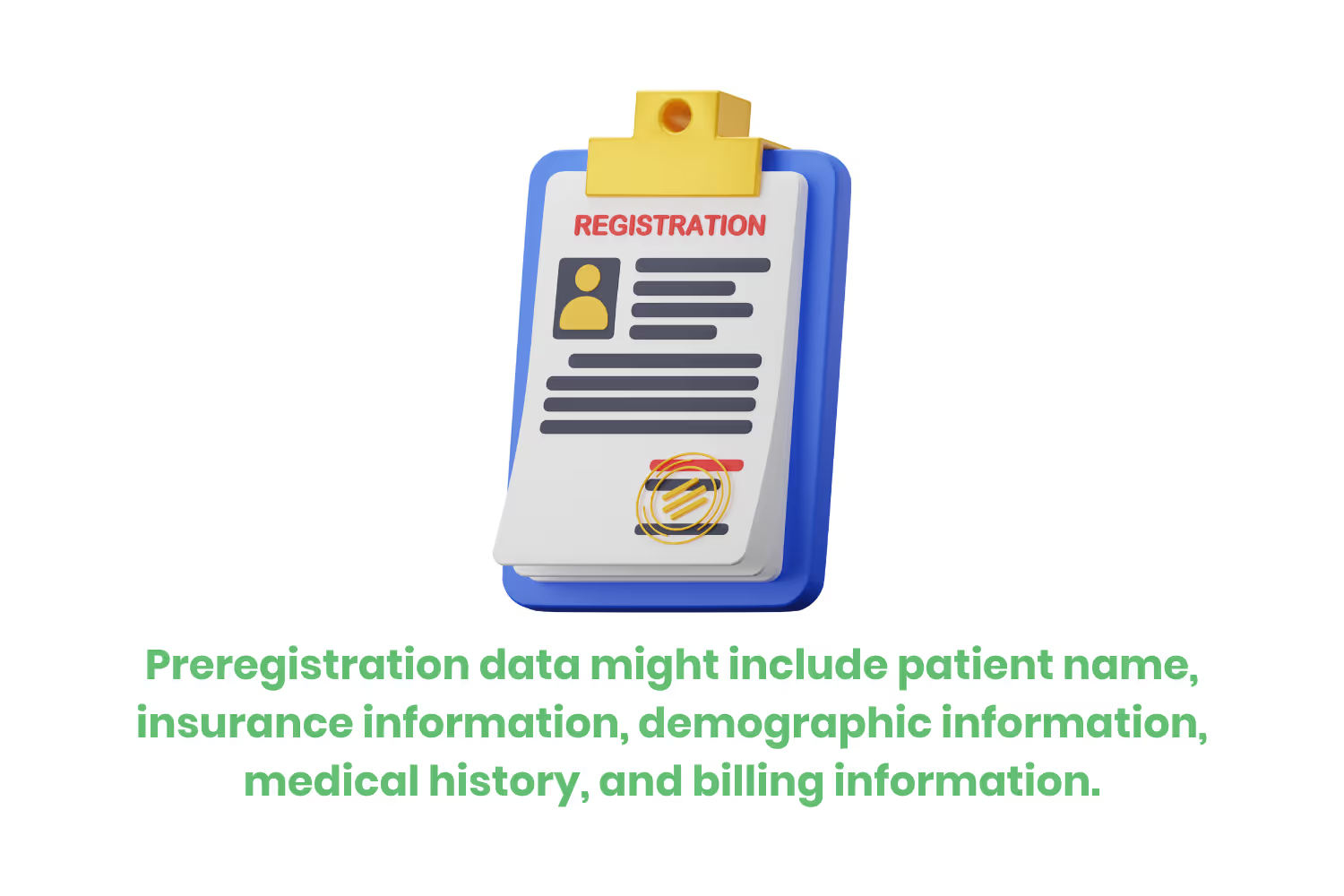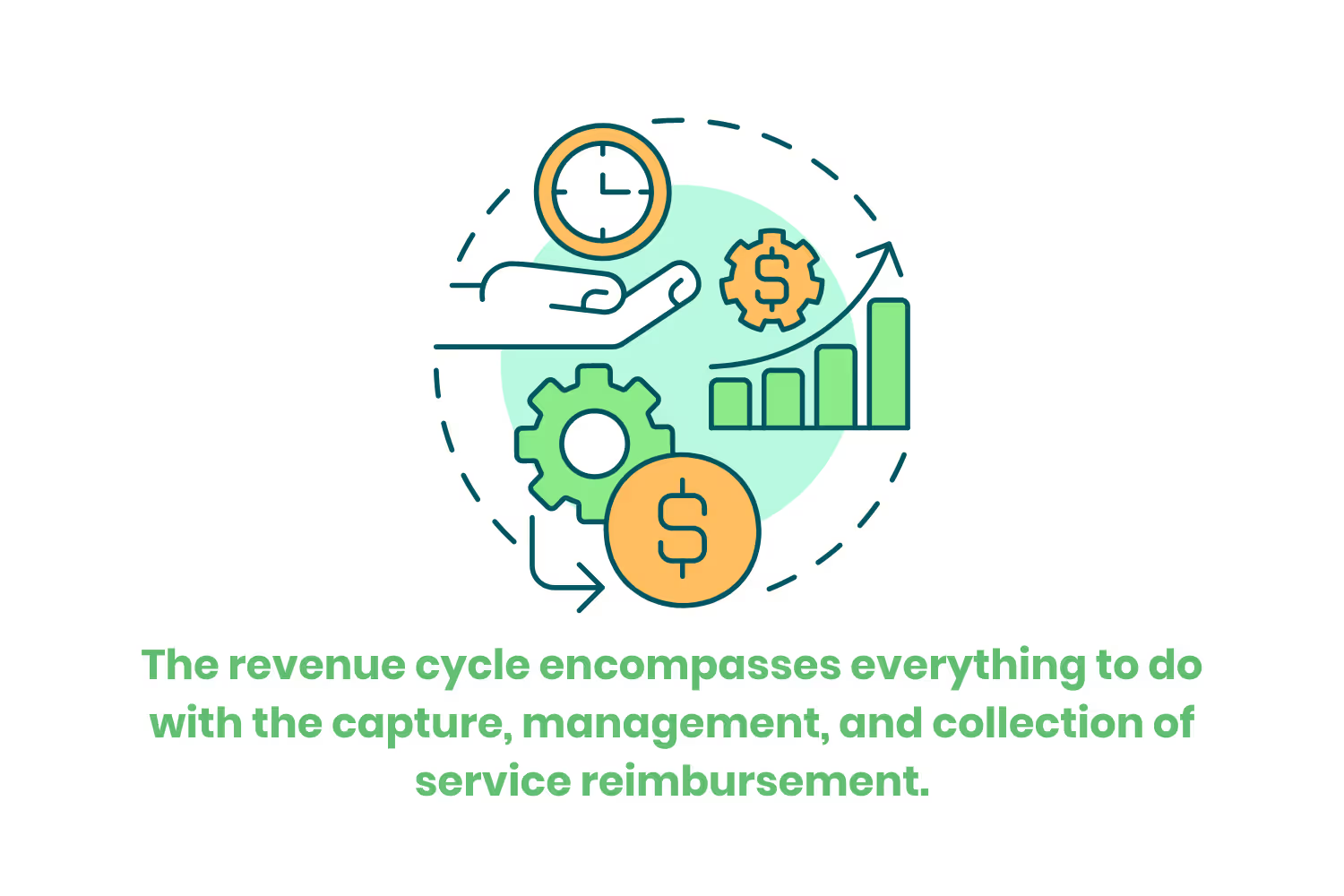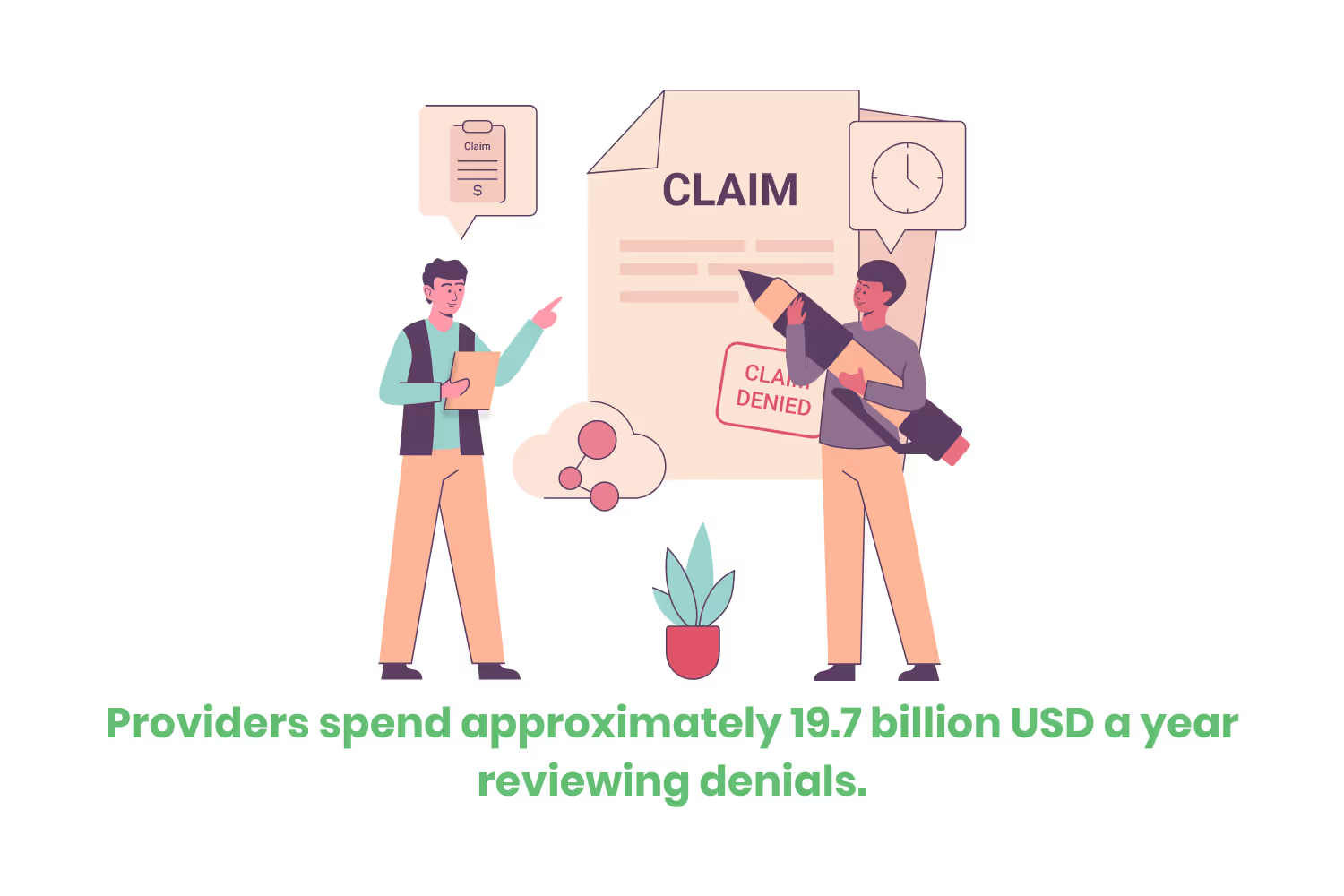6 Undeniable Benefits of Revenue Cycle Management
So what is the best way to go about managing your revenue cycle? With revenue cycle management (RCM), of course! It’s the tool that allows your business to run smoothly and helps you to collect your reimbursements in a timely fashion. Let’s go over a few other benefits of this service and what investing in this software means for the future of your company!

A 2023 survey reports that the median loss per physician (for system-affiliated groups) is more than $249,000. This is due to the increase of operating expenses outpacing revenue gains. This is just one of the many challenges healthcare providers face daily. Providing quality and cost-effective care is the ultimate goal of all healthcare organizations.
An effective strategy to provide top-notch care, while staying financially sound as a business, is a must. Managing administrative and clinical tasks within a single streamlined procedure simplifies processes for everyone. Even for the patient!

So what is the best way to go about managing your revenue cycle? With revenue cycle management (RCM), of course! It’s the tool that allows your business to run smoothly and helps you to collect your reimbursements in a timely fashion. Let’s go over a few other benefits of this service and what investing in this software means for the future of your company!
The Healthcare Revenue Cycle
The revenue cycle in healthcare can be intimidating to even the most seasoned of professionals. There are so many moving parts, and each part can run into all sorts of issues. Sorting out the best way to streamline your workflow to keep your revenue cycle flowing can feel overwhelming.
In the healthcare industry, the revenue cycle encompasses everything to do with the capture, management, and collection of service reimbursement. Check out these important steps, which when put together, format the revenue cycle process.
Preregistration
The use of software to collect patient data when they initially schedule the appointment. Examples of data might include patient name, insurance information, demographic information, medical history, and billing information.

Registration
Data received on the day the patient comes in for their appointment. The patient can also complete this online if your organization utilizes an online portal. During this time, you can review the pre-registration information with the patient. This way, if there are any mistakes, you can fix them before the physician renders services. Have the patient complete any other necessary forms at this time, too.
Charge Capture
Submit a claim to the patient’s insurance company containing any expected service charges. This step confirms the accuracy of what the patient or their insurance are responsible for, and the reimbursement you can expect.
Utilization Review
The patient's health insurance company may need to review certain services before the provider performs them.
Coding
Once the coverage for the services gets confirmed, the procedure can then take place and go through the billing process. First, you must convert each process into a billable code. You can then create claims from these codes to send to the patient’s insurance provider, to collect reimbursement.
Claim Submission
Time to submit the claims. Once they are ready and (hopefully) correctly coded, send those bad boys out to the payer. Payers can be an insurance company or a health plan. They will double-check your claim to make sure there are no mistakes.
Remittance Processing
If the payer finds any issues with your claim, this is the step that you will find out about it. Unless you opt for a clearinghouse to scrub your claims first… but that’s another blog post for another day. Any errors or mishaps mean you will need to resubmit your claim. If your initial claim goes through with no worries, then you will receive information about how much reimbursement you can expect.

Third-Party Follow-Up
Otherwise known as an ‘insurance follow-up’. At this point, you collect your payment from the insurance company or health plan. If a claim goes through with mistakes and you don’t correct/resubmit it, this is where you can see discrepancies.
Patient Collections
Once you collect from the payer, it is then time to collect the remaining balance from your patient. Make sure statements get sent out in a timely fashion to avoid any late reimbursement. You can also make patient payments more accessible by utilizing an online payment portal.
6 Benefits of Revenue Cycle Management
To manage this cycle well and reap all of the benefits, you’re going to need the correct tools and training. A solid RCM system can unlock so many doors for your organization. This is both financially and productivity-wise. Let’s take a look at these 6 benefits you can expect when you invest in an RCM system.
Decrease Claim Denial Rate
Nearly 50% of providers nationwide noticed an increase in claim denial rates in 2023.
The top reasons for a denied claim are as follows:
- Errors in patient access or registration. This can include eligibility or missing prior authorization.
- Lack of documentation, especially when it comes to supporting the medical necessity of a service.
- Missing or incorrect patient information.
- Physician documentation issues.
- Utilization management.
- Coding errors.
- Duplicate claims.
- Untimely filing.

A successful revenue cycle management system focuses on all of these issues. It ensures that no important information falls through the cracks while completing administrative tasks. These tasks, often called “front-end tasks”, include insurance verification and proper coding. As well as the collection of accurate patient and insurance information.
Invest in an RCM system to ensure your claims are accurate before you send them. Avoid the back and forth-that comes with a denied claim. Having your pending reimbursement hop between you and the patient’s insurance company costs time and money. Especially when the same claim is pending for weeks, sometimes even months, on end!
Increase in Revenue and Collections
When claims come back as denied, as I mentioned in the previous section, you're looking at delayed reimbursement. Delayed payment negatively affects providers in multiple different ways. This is because healthcare facilities have all kinds of expenses to consider, such as the services they provide and the compensation for their staff.
Avoiding this takes a solid RCM system that uncovers the patterns of regular claim denials. Removing this challenge from your organization’s day-to-day tasks means smoother revenue flow. According to a Premier national survey, providers spend approximately 19.7 billion USD a year reviewing denials. Avoiding claims means not only avoiding reimbursement delays but also avoiding financial stress due to claim investigations and appeals. which in turn fortifies your overall processes.

Better Quality of Care
When your staff doesn’t need to spend ample amounts of time working on claim denials and other tedious administrative tasks, they have more time for patients. RCM systems allow healthcare organizations to put more time and money into the care they provide. Your patients will thank you for your undivided attention.
Streamline Administrative Tasks
Working efficiently is the best way to cultivate a positive trajectory for any business. In healthcare, much of the front-end administrative work is now automated through technology to help achieve this. Making patient appointments and updating patient administration are just a couple of the tasks that RCM systems simplify for your staff.
Verifying insurance information is another helpful tool found in the RCM toolbelt. With higher accuracy in data collection comes fewer mistakes! And fewer mistakes means collecting your revenue faster.
Greater Patient Experience
Simplifying the patient’s side when it comes to the healthcare experience is another benefit to consider. Using an RCM system makes filling out intake forms, billing, and scheduling easier for patients too! Insurance verification before the appointment also gives patients time to understand what they are responsible for when it comes to payments. This way, they aren’t caught off guard with a surprise out-of-pocket expense.
Reduce Employee Burnout
RCM heavily impacts the financial health of your organization. So avoiding burnout when it comes to your RCM staff is essential. Reducing tedious duties and automating time-consuming tasks takes a weight off of your team. Simplifying these small repetitive tasks allows your staff to focus their attention on more important activities. RCM automation via software is essential to reduce the amount of people-hours necessary for a single task.
Conclusion
To capitalize on the success of your organization, you must efficiently manage your revenue cycle. An RCM system is vital when it comes to fortifying your company’s financial health. Keeping your important data in line and accurate will only benefit you, especially as your organization grows.
After all the more patients you see, the more data you collect. RCM automation, especially when it comes to detail-oriented tasks, will save your staff and patients from otherwise avoidable mistakes.
Emphasize your product's unique features or benefits to differentiate it from competitors
In nec dictum adipiscing pharetra enim etiam scelerisque dolor purus ipsum egestas cursus vulputate arcu egestas ut eu sed mollis consectetur mattis pharetra curabitur et maecenas in mattis fames consectetur ipsum quis risus mauris aliquam ornare nisl purus at ipsum nulla accumsan consectetur vestibulum suspendisse aliquam condimentum scelerisque lacinia pellentesque vestibulum condimentum turpis ligula pharetra dictum sapien facilisis sapien at sagittis et cursus congue.
- Pharetra curabitur et maecenas in mattis fames consectetur ipsum quis risus.
- Justo urna nisi auctor consequat consectetur dolor lectus blandit.
- Eget egestas volutpat lacinia vestibulum vitae mattis hendrerit.
- Ornare elit odio tellus orci bibendum dictum id sem congue enim amet diam.
Incorporate statistics or specific numbers to highlight the effectiveness or popularity of your offering
Convallis pellentesque ullamcorper sapien sed tristique fermentum proin amet quam tincidunt feugiat vitae neque quisque odio ut pellentesque ac mauris eget lectus. Pretium arcu turpis lacus sapien sit at eu sapien duis magna nunc nibh nam non ut nibh ultrices ultrices elementum egestas enim nisl sed cursus pellentesque sit dignissim enim euismod sit et convallis sed pelis viverra quam at nisl sit pharetra enim nisl nec vestibulum posuere in volutpat sed blandit neque risus.

Use time-sensitive language to encourage immediate action, such as "Limited Time Offer
Feugiat vitae neque quisque odio ut pellentesque ac mauris eget lectus. Pretium arcu turpis lacus sapien sit at eu sapien duis magna nunc nibh nam non ut nibh ultrices ultrices elementum egestas enim nisl sed cursus pellentesque sit dignissim enim euismod sit et convallis sed pelis viverra quam at nisl sit pharetra enim nisl nec vestibulum posuere in volutpat sed blandit neque risus.
- Pharetra curabitur et maecenas in mattis fames consectetur ipsum quis risus.
- Justo urna nisi auctor consequat consectetur dolor lectus blandit.
- Eget egestas volutpat lacinia vestibulum vitae mattis hendrerit.
- Ornare elit odio tellus orci bibendum dictum id sem congue enim amet diam.
Address customer pain points directly by showing how your product solves their problems
Feugiat vitae neque quisque odio ut pellentesque ac mauris eget lectus. Pretium arcu turpis lacus sapien sit at eu sapien duis magna nunc nibh nam non ut nibh ultrices ultrices elementum egestas enim nisl sed cursus pellentesque sit dignissim enim euismod sit et convallis sed pelis viverra quam at nisl sit pharetra enim nisl nec vestibulum posuere in volutpat sed blandit neque risus.
Vel etiam vel amet aenean eget in habitasse nunc duis tellus sem turpis risus aliquam ac volutpat tellus eu faucibus ullamcorper.
Tailor titles to your ideal customer segment using phrases like "Designed for Busy Professionals
Sed pretium id nibh id sit felis vitae volutpat volutpat adipiscing at sodales neque lectus mi phasellus commodo at elit suspendisse ornare faucibus lectus purus viverra in nec aliquet commodo et sed sed nisi tempor mi pellentesque arcu viverra pretium duis enim vulputate dignissim etiam ultrices vitae neque urna proin nibh diam turpis augue lacus.



![[ANSWERED] What is a Long-Term Care (LTC) Pharmacy](https://cdn.prod.website-files.com/67e2b8210878abcba6f91ae6/68d687806a075a1cf64659b0_WhatisLongTermCarePharmacy_925.avif)
